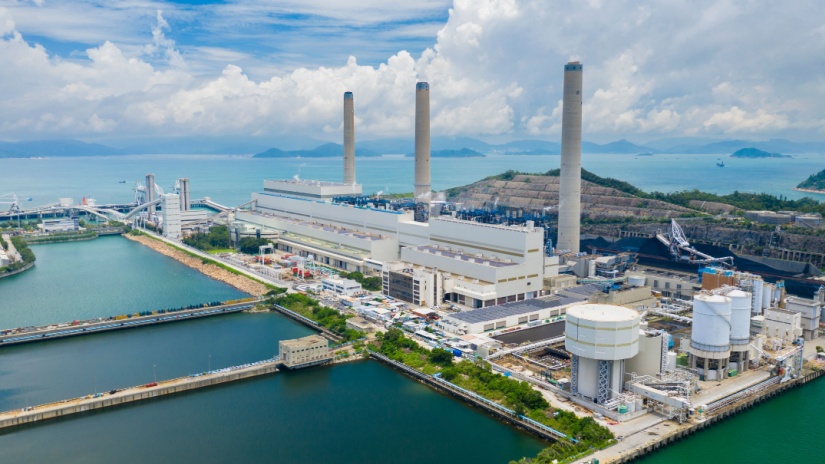Knowledge Centre
Coal electricity plants: What you need to know

Coal-fired power plants, also known as coal-fired power stations, are facilities that burn coal to produce steam, which is then used to generate electricity.
These power stations contribute to approximately 40% of the world's electricity. Countries like South Africa rely on coal for 94% of their electricity, while China and India use coal for 70-75% of their electricity needs, with China being the largest consumer of coal globally.
In Australia, coal-fired power stations are a familiar term, often associated with debates and discussions about energy. Despite its controversial nature, coal plays a significant role in providing electricity, especially in regions where access to electricity is limited.
However, the use of coal comes with drawbacks, as it produces large amounts of pollutants that harm air quality and contribute to climate change. While there are ongoing efforts to transition to renewable energy sources, coal remains a major source of electricity generation globally.
How do coal fired electric plants work?
In Australia, thermal coal exists in two primary forms: black coal and brown coal. These types of coal are sedimentary rocks that have developed over millions of years from compressed and decomposed vegetation, layered under sand and sediment.
Converting coal into electricity involves several key steps:
- Unloading: Coal is unloaded from trains, either by cranes or through innovative floor-drop systems that allow for continuous unloading without stopping the train. Many plants are located near coal mines, eliminating the need for long-distance transportation.
- Pulverisation: The coal is pulverised into a fine powder to ensure efficient burning and minimise pollutants.
- Boiler: The pulverised coal is fed into a boiler, where combustion occurs and heats water to produce steam.
- Turbine: The high-pressure steam from the boiler is directed onto turbine blades, causing the turbine to spin at high speeds.
- Generator: The spinning turbine is connected to a generator, which converts the mechanical energy into electricity.
- Electricity Generation: The electricity produced is fed into the electrical grid for distribution and use.
This process follows the Rankine cycle, a thermodynamic cycle used to convert heat into work. Water is a critical component of this cycle, so coal plants are typically located near bodies of water for cooling purposes.
Despite its efficiency, coal-fired power generation also comes with environmental challenges, particularly related to emissions and water usage.
Source: Wikimedia Commons (Online)
The environmental impact
Coal power plants have numerous environmental impacts on the local ecosystem.
Air pollution
Coal combustion releases sulphur dioxide (SO2), nitrogen oxides (NOx), and particulate matter (PM) into the atmosphere. SO2 and NOx can react with other compounds in the atmosphere to form acid rain, which can harm vegetation, aquatic ecosystems, and infrastructure. All of this can contribute to respiratory issues and cardiovascular diseases in humans.
Greenhouse gas emissions
Burning coal releases more carbon dioxide (CO2) into the air. CO2 is the most prevalent greenhouse gas responsible for climate change, and the more of this is pumped out, the worse our climate crisis becomes.
CO2 remains in the atmosphere for a long time, trapping heat and leading to global warming.
Water usage and pollution
Coal-fired power plants require large quantities of water for cooling purposes. This water is often withdrawn from nearby water bodies, impacting aquatic ecosystems as well as our air.
The discharge of heated water back into rivers or lakes can disrupt local ecosystems with contaminants like mercury, arsenic, and lead, which are present in coal and its byproducts.
Land degradation
Coal mining can lead to land degradation, deforestation, and soil erosion and open-pit mining can disrupt local ecosystems and wildlife habitats. After coal is burned, the disposal of coal ash, a byproduct of combustion, can also impact land quality and nearby water sources.
Waste generation
Coal combustion generates coal ash, a residue that contains heavy metals and other pollutants. Proper disposal of coal ash is essential to prevent contamination of soil and water sources.
Coal plants also produce other waste streams, such as wastewater from flue gas desulphurisation systems, which must be treated to remove pollutants before discharge.
Health impacts
Air and water pollution from coal-fired power plants can have significant health impacts on nearby communities. Persistent exposure to pollutants like SO2, NOx, PM, and heavy metals can lead to respiratory illnesses, cardiovascular diseases, and other health problems.
Vulnerable populations, such as children, the elderly, and people with pre-existing health conditions, are particularly at risk.
Coal electricity plants in Australia
There are currently 24 coal fired power plants across Australia. Here they are by state:
New South Wales
| Station | Commission Year | Scheduled to Close | Coal Type | Mine Type | Owner |
| Bayswater | 1982 | 2033 | Bituminous | Open Cut | AGL |
| Eraring | 1982 | 2025 | Bituminous | Underground | Origin |
| Mt. Piper | 1993 | 2040 | Bituminous | Underground | EnergyAustralia |
| Vales Point B | 1978 | 2033 | Bituminous | Underground | Delta |
Queensland
| Station | Commission Year | Scheduled to Close | Coal Type | Mine Type | Owner |
| Callide B | 1989 | 2028 | Bituminous | Open Cut | CS Energy |
| Callide C | 2001 | Not announced | Bituminous | Open Cut | CS Energy |
| Gladstone | 1976 | 2035 | Bituminous | Open Cut | Rio Tinto |
| Kogan Creek | 2007 | 2042 | Bituminous | Open Cut | CS Energy |
| Millmerran | 2002 | 2051 | Bituminous | Open Cut | Intergen |
| Stanwell | 1993 | 2046 | Bituminous | Open Cut | Stanwell |
| Tarong | 1984 | 2037 | Bituminous | Open Cut | Stanwell |
| Tarong North | 2002 | 2037 | Bituminous | Open Cut | Stanwell |
Victoria
| Station | Commission Year | Scheduled to Close | Coal Type | Mine Type | Owner |
| Loy Yang A | 1984 | 2035 | Lignite | Open Cut | AGL |
| Loy Yang B | 1993 | 2047 | Lignite | Open Cut | Chow Tai Fook, Alinta Energy |
| Yalloum Power Station | 1975 | 2028 | Lignite | Open Cut | EnergyAustralia |
Western Australia
| Station | Commission Year | Scheduled to Close | Coal Type | Mine Type | Owner |
| Collie | 1999 | 2027 | Bituminous | Open Cut | Synergy |
| Muja | 1981 | 2025 - 2029 | Bituminous | Open Cut | Synergy |
| Bluewaters | 2009 | - | Bituminous | Open Cut | Sumitomo Group, Kansal Electric |
The Australian Capital Territory phased out coal-fired power generation in 1957 with the decommissioning of the Kingston Powerhouse, opting for other sources like natural gas and renewables.
The Northern Territory mainly relies on natural gas and renewables, having no operational coal-fired power stations.
South Australia closed its last coal power stations, including the Northern and Playford B power stations, transitioning to a mix of renewables and gas for electricity generation.
Tasmania doesn't have coal-fired power stations, primarily using hydroelectricity, supplemented by natural gas when needed.
Pros and cons of coal electricity plants in Australia
Coal-fired power stations have both advantages and disadvantages in powering Australia. The accessibility and cost-effectiveness of coal are key advantages, but these are countered by significant environmental impacts:
| Pros | Cons |
| Relatively low cost energy source | High greenhouse gas emissions |
| Abundant global reserves | Air pollution leading to respiratory issues |
| Reliable source of baseload power | Water usage and pollution |
| Established infrastructure | Generation of coal ash and other waste products |
| Can be located near coal mines | Land disturbance and habitat destruction |
| Provides jobs in mining and power | Contributes to climate change and global warming |
| Dependence on non-renewable sources |
Is Australia phasing out coal electricity plants?
Australia has been gradually reducing its reliance on coal for power generation, but it's a gradual process rather than an immediate phase-out.
Several factors are driving this transition, including environmental concerns, the decreasing cost of renewable energy sources, and global commitments to reduce greenhouse gas emissions.
Many coal-fired power plants in Australia are ageing, and there is a growing recognition of the need to transition to cleaner energy sources. However, coal still plays a significant role in Australia's energy mix, particularly in states like Queensland and New South Wales, which have large coal reserves.
While there are plans to phase out coal-fired power plants over time, the transition is complex and requires careful planning to ensure energy security and affordability.
The Australian government has set targets to reduce emissions and increase the share of renewable energy in the energy mix, but the timeline for phasing out coal is not yet set in stone.
Are you looking for better options for your electricity generation? Contact the team at Compare Energy. We’ll talk you through where you can get your energy from.

